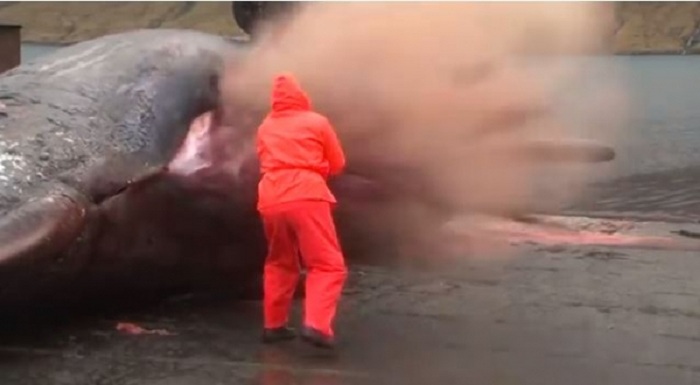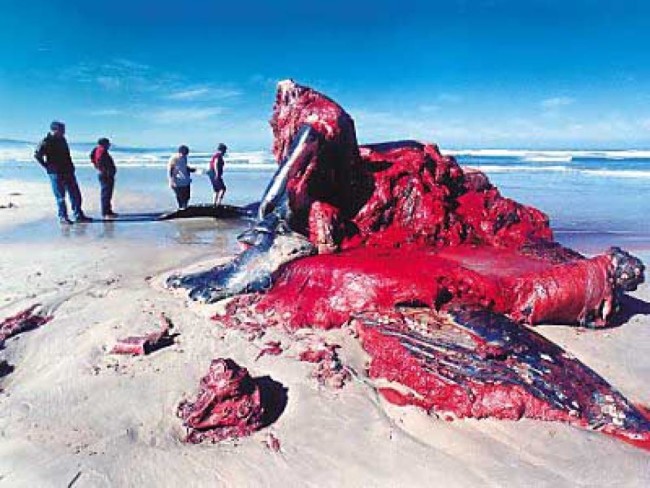

The Trout River crisis was another chapter in the history of our bizarre fascination with whales, a tradition rooted in rumour, myth, pseudoscience, and narcissism. And they explode-if not in reality, then at least in our frightened imaginations. They wash up on shore seething with toxins. Whales are icons of human vulnerability-totemic canaries in our ecological coal mine. What’s certain, though, is that this year’s die off was a devastating blow to a tiny, imperiled community-one whose survival is oddly bound up with our own anxieties. It’s possible that climate change contributed to extreme freeze-thaw cycles, luring more whales into the trap and then turning on them severely ocean contaminants in the region could also be making them sterile. There were no spontaneous combustions in Newfoundland this year, but the threat of flying guts symbolizes a more troubling reality: something awful is happening to blue whales in the northwest Atlantic. The results: hapless sightseers caught in a meteor shower of whale flesh, a few dented vehicles, and one of the most popular Internet videos of the pre-YouTube era. (The animal carcasses remained mostly intact.) In both cases, human meddling probably triggered the “explosions”-which are better described as minor blowouts of decomposition gasses.

Since then, exploding whale footage has become a genre in its own right: whale guts befouling the streets of Tainan City, Taiwan a researcher in the Faroe Islands caught in a mess of blubber. The panic over exploding whales originates not from biological reality, but mostly from a video, circulated online, of a 1970s newscast in which Oregon highway officials attempt to dispose of a sperm whale carcass with a half ton of dynamite. “If that whale does explode,” town clerk Emily Butler told the St. John’s Telegram, “we don’t know what danger that would be to our infrastructure…or to people.” A website called “Has the Whale Exploded Yet?” got millions of page views, and stories about the volatile carcass made headlines around the world. But even this might have gone underreported, had it not been for what happened next: three blue whale carcasses, each more than 20 meters long, washed up on the Newfoundland shore, one of them near the 700-person fishing village of Trout River. What Lawson saw from the air was even more horrifying than he’d expected: not four, but nine blue whale corpses-the most extreme die-off ever recorded in a single season. “They just don’t seem to be breeding, and we don’t know why.” “We rarely see calves in the northwest,” says Lawson. The species is still recovering from the effects of industrial whaling-a practice that peaked in the ’20s and ’30s-and the regional population isn’t regenerating fast enough. The trap once killed four blue whales in a single year, a sizable loss, given that there are only 250 adults in the northwest Atlantic region.

In shallow waters, whales are crushed between incoming ice and the sea floor in deeper waters, they drown. As the temperature warms in spring, ice sheets break off and are blown westward, creating a pathway through which whales can swim into the bay-but a strong wind from the opposite direction can send the ice back, effectively sealing the trap. In winter, the bay freezes over, making it uninhabitable to animals that rely on surface access for air. George’s waters have always been dangerous for marine mammals. Late last March, Jack Lawson, a research scientist with the province’s Department of Fisheries and Oceans, received an ominous cellphone picture of four dark-grey lumps, like abandoned inner tubes, lodged in the ice he feared they were the distended lungs of dead whales, and took a helicopter flight over the icy region to investigate. George’s Bay-a jagged, triangular body of water near the southwest corner of Newfoundland-is better known as the Whale Trap.


 0 kommentar(er)
0 kommentar(er)
